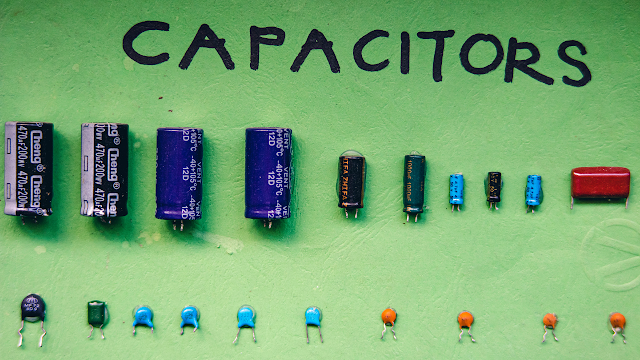How to check electrolytic capacitors
How to check electrolytic capacitors
Electric capacitors are present in many household appliances and air conditioning equipment, and they can malfunction, leading to the interruption of the operation of electrical appliances.
electrolytic capacitor
The electric capacitor affects the performance of electrical appliances in general, or the electrical appliances in the house, as in the case of an electric washing machine. When the electric capacitor malfunctions, the washing machine motor makes sounds without working.
Steps to check the electrolytic capacitor
A test can be conducted to determine whether the electrical capacitor of the devices is damaged or not, in the following ways:
First:
remove the starting capacitor. The easiest way to discharge the capacitor charge is to connect the terminals of a light bulb with a low voltage of about 120V 20W to the terminals of the capacitor. This will release the electrical energy stored in the capacitor more safely.
It is also necessary to be very careful not to close the electrical circuit by connecting the two ends to each other before the electric charge is released into the capacitor, as doing so may lead to injury and death.
Second:
Check for condensate swelling or the possibility of liquid on it. When there is a slight swelling in the upper part of the condenser or its expansion, this indicates damage to the condenser and is a sign of that, as well as the presence of any dark liquid on the top of the condenser, is a sign of damage to the condenser in general. , these two things must be noted, and the follow-up can be done in any case to check the capacitor using a potentiometer since the process takes a few seconds.
Third:
Using a digital or analog potentiometer, any two types can be used as they work in the same way and are suitable for the task, by setting the scale to 1-kilo ohm to start the test.
Fourth:
Touching the two ends of the capacitor to the two ends of the resistance scale to test the terminals. This simple test involves touching the terminals of the capacitor twice and then comparing the results, then connecting the two ends of the scale to the two ends of the capacitor, and then doing their opposite. The reading needle is supposed to read the value 0 ohms and then the reading needle oscillates to The sign of infinity on the analog scale.
– It is assumed that an open line appears whenever flipping the terminals on the digital scale. This means that the capacitor is working and the problem you are facing is not related to it if this does not happen, or that there is no difference means that the capacitor is damaged and not working.
Fifth:
To check the electrical capacitance if the capacitor is working, it is also possible to resort to the use of a multimeter, and the setting of the electric capacity in the meter can be used to quickly check the capacitor, if the reading that appears on the scale is close to the reading written on the capacitor, the capacitor is working in good condition and undamaged.
Important steps when checking the capacitor
– First and before starting the steps of examining the capacitor, the electrical charge stored in the capacitor must be discharged, as the capacitor stores the electrical charge inside.
The amount of energy and electrical charges stored in the capacitor also increases by increasing the capacitor’s capacitance in microfarads, which leads to an increase in bad burning that may lead to electric shock.
Always take care to empty the existing electrical charge stored in the electric capacitor, for the devices in which the capacitor is to be checked before conducting any test. This can also be done by using a metal object that has an isolated handle, such as screwdrivers used to remove screws or nails.
This is followed by holding the screwdriver from the handle that is isolated or covered with insulating material, then placing the metal part on both ends of the capacitor and holding it for several seconds.
– But this method is one of the dangerous methods, as in the case of connecting the terminals of a capacitor with a high voltage and fully charged, it can lead to a high current flowing in the electric capacitor, which may lead to an explosion of the capacitor, causing harm and injury while holding the capacitor in the hand.


Join the conversation